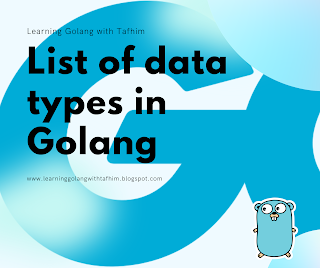| index | Description |
|---|---|
| 1 | Type: int8 8-bit signed integer |
| 2 | Type: int16 16-bit signed integer |
| 3 | Type: int32 32-bit signed integer |
| 4 | Type: int64 64-bit signed integer |
| 5 | Type: uint8 8-bit unsigned integer |
| 6 | Type: uint16 16-bit unsigned integer |
| 7 | Type: uint32 32-bit unsigned integer |
| 8 | Type: uint64 64-bit unsigned integer |
| 9 | Type: int Both in and uint contain same size, either 32 or 64 bit. |
| 10 | Type: uint Both in and uint contain same size, either 32 or 64 bit. |
| 11 | Type: rune It is a synonym of int32 and also represent Unicode code points. |
| 12 | Type: byte It is a synonym of int8 . |
| 13 | Type: uintptr It is an unsigned integer type. Its width is not defined, but its can hold all the bits of a pointer value. |
| 14 | Type: float32 32-bit IEEE 754 floating-point number |
| 15 | Type: float64 64-bit IEEE 754 floating-point number |
| 16 | Type: complex64 Complex numbers which contain float32 as a real and imaginary component. |
| 17 | Type: complex128 Complex numbers which contain float64 as a real and imaginary component. |
| 18 | Type: boolean They are boolean types and consists of the two predefined constants: (a) true (b) false |
| 19 | Type: string A string type represents the set of string values. Its value is a sequence of bytes. Strings are immutable types that is once created, it is not possible to change the contents of a string. The predeclared string type is string. |

Comments
Post a Comment